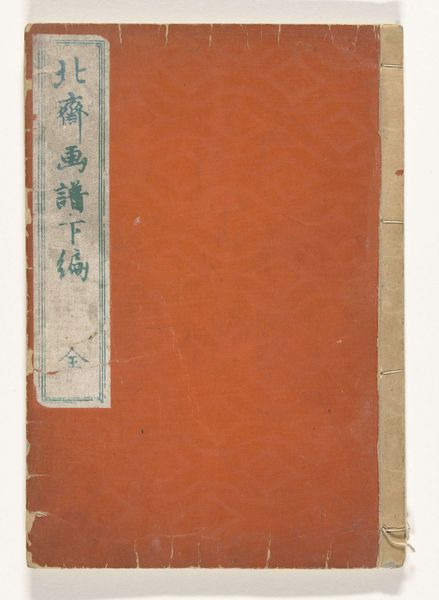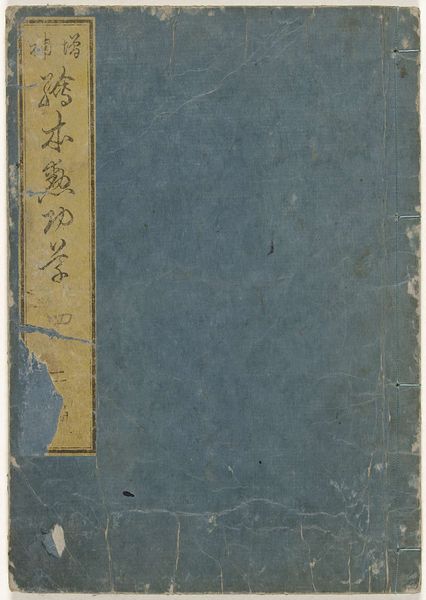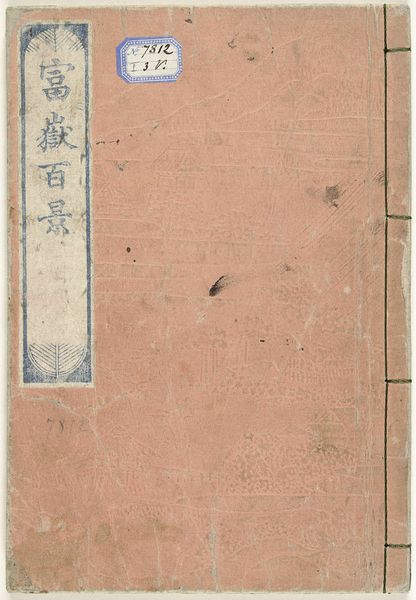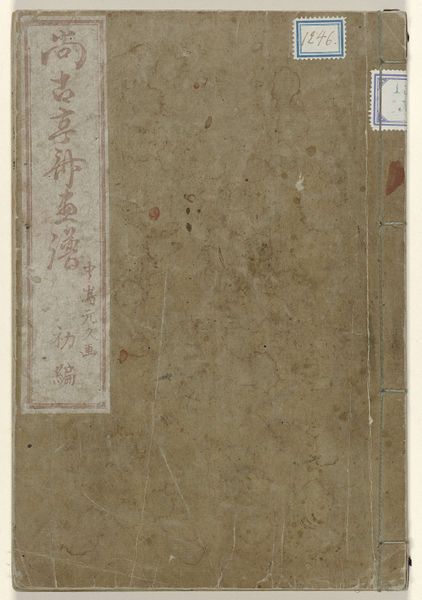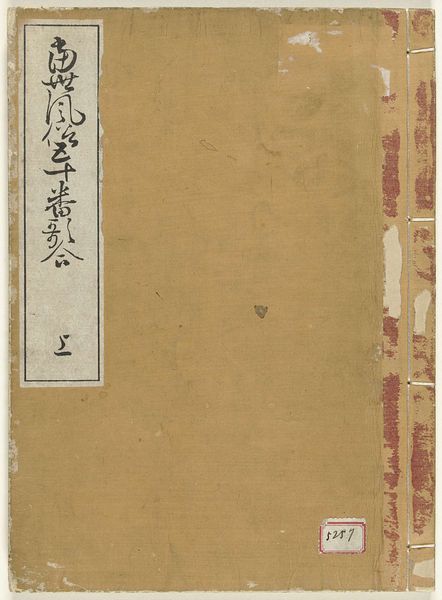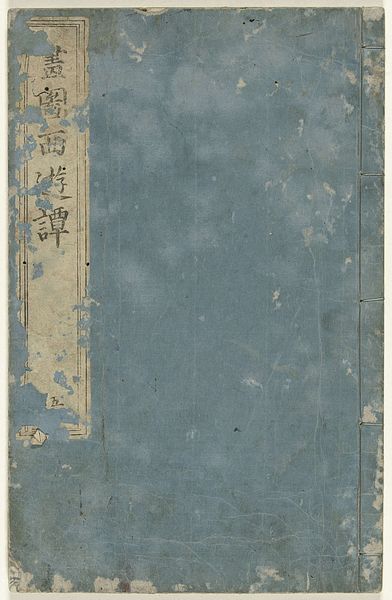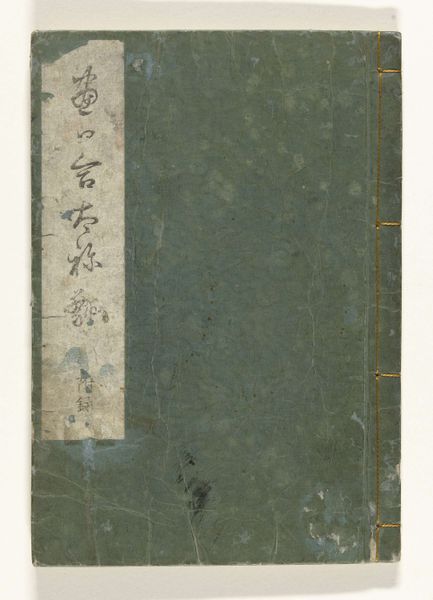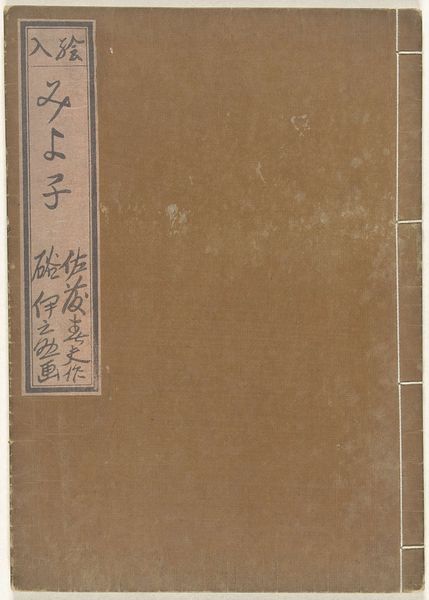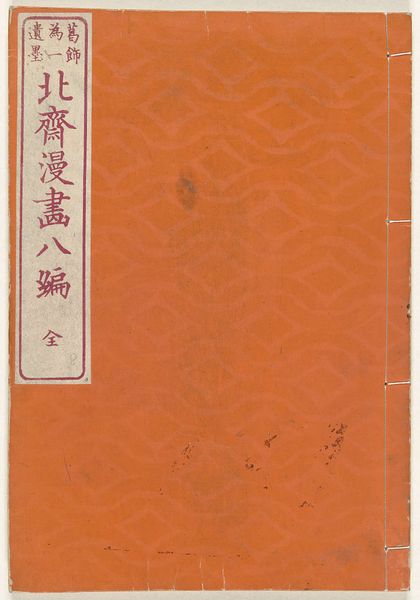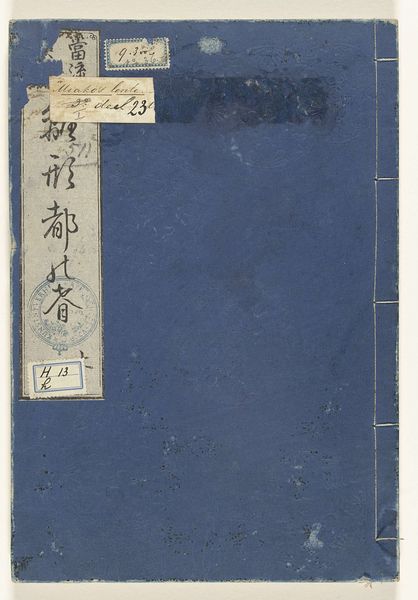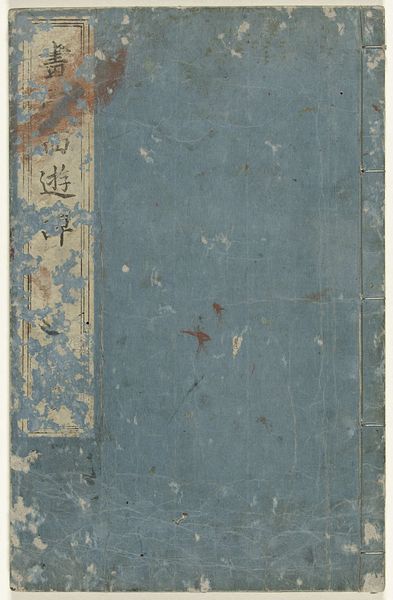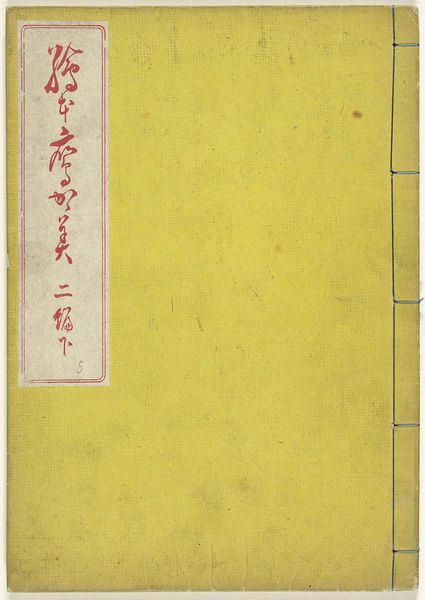
paper, ink
#
asian-art
#
ukiyo-e
#
paper
#
ink
Dimensions: height 227 mm, width 156 mm
Copyright: Rijks Museum: Open Domain
Editor: We’re looking at “Schetsen van Keisai” or “Keisai Sketches” from around 1815, by Masayoshi. It appears to be made of ink and paper. The cover gives me the impression that the sketches inside might show every day working conditions. What's striking about the materials and production to you? Curator: It’s fascinating how the materials themselves tell a story. Paper, especially in 19th century Japan, wasn’t just a neutral surface. Consider the labor involved in its making: the cultivation of fibers, the pulping, the drying… It speaks to a whole social fabric around its production, doesn't it? And the ink too; how was it processed and applied? Ukiyo-e prints were products of workshops. What divisions of labour might be suggested by the artist’s “sketches”? Editor: That's really interesting. I hadn't considered the labour of it all, just the aesthetic value. So you're suggesting the mass production of this form impacts even its value? Curator: Absolutely. Mass production via woodblock printing made these images accessible to a wider audience. The artist becomes part of a system rather than a solitary genius. Think about the socio-economic implications of making art more accessible. The traditional hierarchy of art is also being challenged because its value comes not just from its artistic representation, but how it participates in labor and trade. Editor: So it’s less about the individual artist’s vision and more about the entire process of creating and distributing the artwork as a commodity? Curator: Precisely. We should consider the work conditions, skills, the historical context of consumption. These elements inform what we’re viewing. The final artwork is shaped and ultimately redefined by these considerations. Editor: That really shifts my perspective! I'll definitely look at art differently now. Thank you. Curator: And I see it refreshed through your eyes. It reminds me that considering the lifecycle of the medium itself and production shifts can deepen our understanding, even beyond ukiyo-e.
Comments
No comments
Be the first to comment and join the conversation on the ultimate creative platform.
